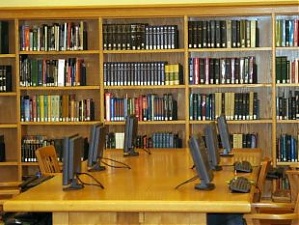Baltic, Direct Speech, Education and Science, Estonia, USA
International Internet Magazine. Baltic States news & analytics
Wednesday, 24.12.2025, 10:01
The Baltic Studies Program of Stanford University Libraries
 Print version
Print version |
|---|
In addition to collection development, the library’s Assistant Curator for Estonian and Baltic studies, hired in 2013, is responsible for building the Baltic Studies Program of various events and projects around the collection. Focusing on the occupation, resistance, freedom and recovery of Estonia, Latvia and Lithuania, the SUL’s Baltic collection also highlights the countries’ connections to Finland and other Nordic states.
With more than 30,000 titles, this is one of the strongest Baltic collections in the United States and has a great perspective of growing into being one of the top collections outside the Baltic states on the history, culture and literature of these countries. Using a large network of vendors in the Baltic states and elsewhere, and receiving new shipments on a monthly basis, SUL has developed a very strong collection of the recently published Baltic works.
At the same time, SUL has partnered with other institutions in the U.S. and Canada that have strong Baltic collections (Washington University Library, University of Toronto) in filling the gaps in its collection of items published in the second half of the 20th century. Here, the growing number of donations received from the Baltic diaspora has also been significantly helpful. In addition to printed materials, SUL has recently begun collecting Baltic manuscripts, mainly focusing on the personal papers, letters, diaries, memoirs and photos of those who were forced to leave the Baltic states during WWII and ended up in the United States.
Together with the Baltic collection of neighboring Hoover Institution Library and Archives that mainly focuses on political issues (war, revolution, peace), SUL’s collection aims to attract Stanford students and faculty as well as visiting scholars from all over the world, including the Baltic states. SUL actively collaborates with other institutions and organizations on and off campus in order to enhance the Baltic studies by conducting collaborative projects, organizing events, and exchanging ideas regarding collection development. In addition to close partnership with the Estonian Museum of Occupations, also supported by the Kistler-Ritso Foundation, SUL has several ongoing collaborations with other organizations in the region.
For example, SUL has started to build a Baltic archive
of audiovisual sources, primarily video testimonies about the Second World War
and the Soviet period in the Baltic states. This project currently includes
digitization of the already existing collection of 2200 video testimonies at
the Museum of the Occupation of Latvia, as well as the creation of 40 new video
testimonies with Unitas Foundation/Kogu Me Lugu network in Estonia.
Another focus of this video collection will be the so-called “Estonian mafia” – a large number of Estonians working in the ICT sector in Silicon Valley. SUL has hosted, co-organized and supported several conferences, seminars, talks, exhibits, film screenings and other events both on and off campus. In 2014, the President of Estonia, Mr. Toomas Hendrik Ilves, and the Prime Minister of Estonia, Mr. Taavi Rõivas visited the campus and gave talks in Green Library on issues related to digital society and e-residency. SUL has also started a tradition of Baltic cultural evenings at Stanford, featuring Baltic films and talks by visiting scholars. In July 2015, the renowned Estonian TV Girls’ Choir visited Stanford and gave a public concert in the Memorial Church.
This academic year, SUL partnered with Stanford Center for Russian, East European and Eurasian Studies (CREEES) in hosting the Baltic film series at Stanford – a series of public screenings of films throughout the fall quarter, focusing on various aspects of the history and culture of the Baltic countries. The series opened on Oct. 19 with the screening of Icelandic-Baltic documentary feature, “Those Who Dare” (2015). The event, bringing together more than 150 people, was opened by an introductory lecture by Mr. Jón Baldvin Hannibalsson, foreign minister of Iceland from 1988-1995 and the key character of the film, “Those Who Dare”. The most recent news about the Baltic Studies Program of Stanford Libraries, and about Baltic studies elsewhere are posted on the program’s Facebook and Twitter accounts.
Expert article published 17.12.2015. in issue №5 Baltic Rim Economies (BRE), which deals with the development of the Baltic Sea region.
http://www.utu.fi/en/units/tse/units/PEI/BRE/Documents/BRE_5_2015%20.pdf








 «The Baltic Course» Is Sold and Stays in Business!
«The Baltic Course» Is Sold and Stays in Business!

